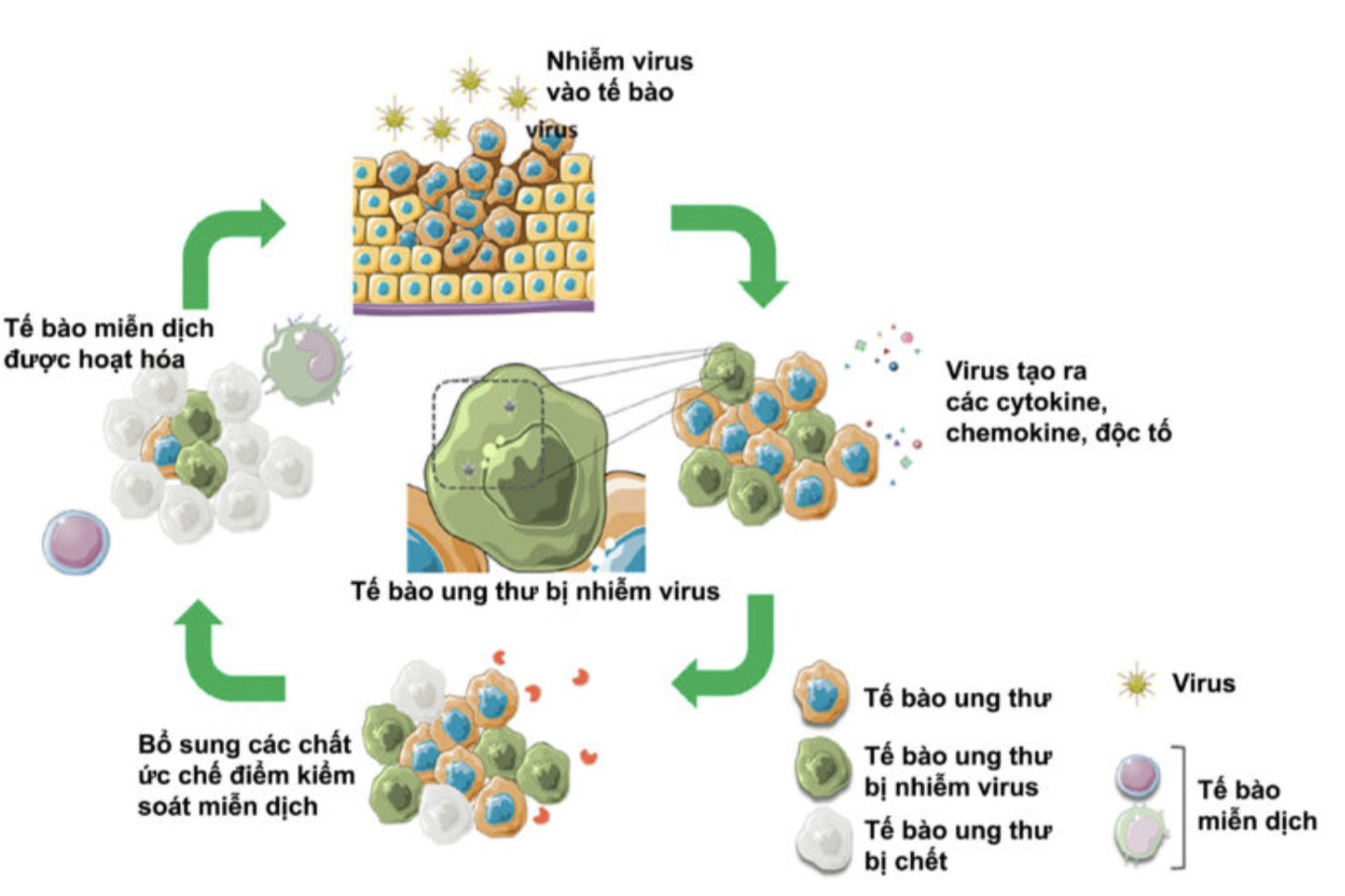New hope or “illusory”?
Recently, the scientific journal News Medical (UK) published information that the first volunteers in the US were injected with the CF33-hNIS virus (or Vacina) to destroy the virus. cancer. The research side said that in phase 1 (from April 2022), a total of 100 people will be vaccinated with the virus on the first and 8th day, with 2 ways: intravenous injection and direct injection. into the tumour.
How is the CF33 virus created?
Talking with Reporter Dan Tri, Dr. Nguyen Hong Vu, Research Institute cancerCity of Hope, California (USA), scientific advisor of Purple Ribbon (non-profit organization on prevention cancer in Vietnam) said that CF33 is one of the products in the laboratory of Professor Yuman Fong, of the City of Hope Research Institute.
To create CF33, the team of scientists infected several previously known strains of the orthopoxvirus group into CV-1 cells (monkey kidney cells) so that the virus strains recombined themselves. Then from the infected cells, they selected and purified 100 different strains of the virus.
Virus strains were further screened on a pool of 60 cell lines cancer in humans, to select a virus strain that kills cells cancer strong. Through this process, they selected a virus strain called CF33.

Cell killing mechanism cancer of the virus injection method (Image: Purple Ribbon).
From the basic CF33 virus, the research team also changed some points to create “variants” of CF33 such as CF33-Fluc, CF33-GFP, CF33-hNIS.
In 2018, the research work on injecting anti-virus cancer was published in the Journal of Translational Medicine. In which, the research team used CF33 virus to treat cancer pancreas in mice. Specifically, cells cancer Human pancreas was injected under the skin of mice to create tumors and then the virus was injected directly into the tumor to observe the therapeutic effect. The results show that they have the ability to slow down the growth of tumors, even make the tumor smaller compared to the control group.
By 2019, scientists continue to publish research on the application of modified CF33 virus to treat cancer lung (CF33-GFP virus) and cancer colon (CF33-hNIS virus) generated in the skin of mice. The results showed that the tumor of the virus was suppressed quite strongly, as well as the combination of radioisotopes with the virus increased the effectiveness of treatment. cancer up a lot.

Treatment effect of CF33-hNIS virus on colon cancer model (Photo: Purple Ribbon).
Hope for treatment cancer new, but don’t rush
According to Dr. Nguyen Hong Vu, currently, biotechnology company Imugene (Australia) is coordinating with the above research group to prepare for the clinical trial phase of CF33 on humans.
Although the specific content of the trial is unknown, Dr. Vu said that it is likely that CF33 will be injected on patients with different types of cancer. cancer which they have had successful trials in mice in the preclinical stage like cancer pancreas, cancer lung, cancer colon and cancer breast (successful on virus strain CF189).
According to the documents of the company Imugene, the clinical trial will be aimed at determining the optimal dose and immunological safety. Depending on the specific situation, some patients in addition to CF33 virus injection also need to take additional immune checkpoint inhibitors (ICI).
According to Dr. Vu, some media channels are a bit “exaggerated”, saying that CF33 can “destroy all types of media”. cancer“, when the initial successes were only on a few types cancer with a mouse skin tumor model.
However, the positive results of the preclinical trial of CF33 also open up hope for the path of drug development to the time of widespread use in patients. canceralthough there is still long and many thorns ahead.

Viral injections may be the hope of treatment cancer new, but needs long-term evaluation (Photo: Hoang Le).
MSc.BS Nguyen Trieu Vu, Head of Oncology Department, Thu Duc City Hospital (HCMC) shared, the method of injecting the virus to kill the virus. cancer has just begun human clinical trials as phase 1 of the study, after having passed the laboratory phase.
Regarding the treatment mechanism, Dr. Vu said that when the virus is introduced into a person, it has been treated to change its surface, genetically modifying it to attack foreign cells. cancer but does not cause damage to healthy cells. However, that’s just a theory, if you want to evaluate the effectiveness, have serious side effects or not, you need to go through many research phases, in many more patients.
“This is a new and promising direction, but it needs long-term monitoring and should not be rushed,” said Dr. Vu.
at Blogtuan.info – Source: danviet.vn – Read the original article here



